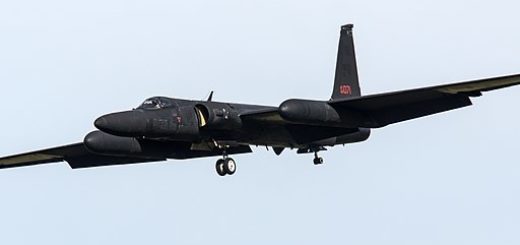Airbus, Leonardo and Thales Merge Space Divisions to Form €6.5B European Defense Player
{loadposition bannertop}
{loadposition sidebarpub}
Airbus, Leonardo and Thales plan to merge their main space operations into a single European company by 2027, targeting a €6.5 billion business with 25,000 employees. The move is Europe’s boldest step yet to compete with U.S. space powerhouses and strengthen strategic sovereignty in defense communications and satellite technology.
Airbus, Leonardo and Thales announced on October 23 that they have signed a memorandum of understanding to fold their main space activities into a single European company, a move framed as a bid for scale against U.S. heavyweights and an answer to Europe’s sovereignty agenda. The joint statement lays out a balanced governance model, a target go-live in 2027 pending approvals, and a pro-forma business of roughly 6.5 billion euros and 25,000 employees across Europe. Airbus will hold 35 percent, with Leonardo and Thales at 32.5 percent each, pooling Airbus Space Systems and Space Digital with Thales Alenia Space, Telespazio and Thales SESO under one roof. The partners tout “mid triple-digit million” operating synergies within five years, underscoring a consolidation long urged by policymakers.Follow Army Recognition on Google News at this link
Airbus, Leonardo, and Thales unite to form a single European space company, creating a powerful rival to U.S. giants like SpaceX and strengthening Europe’s sovereignty in defense communications, satellite systems, and secure space technology (Picture source: Thales Alenia Space).
The blueprint borrows from MBDA’s playbook: a jointly controlled champion that keeps national equities aligned while eliminating duplicate engineering, procurement and program management. Financial Times reporting tracks the same share split and scale, describing a European “champion” designed to compete in markets upended by SpaceX’s vertically integrated model and LEO broadband economics. The MBDA analogy and the urgency to contest U.S. and Chinese incumbents are the main reasons why this joint venture is created.
What makes this a potential fundamental change for defense is the end-to-end span. Airbus brings secure military satcom heritage and high-end Earth observation platforms; Thales Alenia Space adds flight-proven LEO and GEO buses and payloads; Telespazio anchors operations, ground control and services. Together, the new entity can field integrated constellations, hardened ground segments and terminals, and software-defined payloads with optical crosslinks, then wrap them in sovereign services contracts for defense ministries. That stack is precisely where European demand is headed as governments seek resilient communications, assured imagery and navigation augmentation under EU strategic autonomy mandates.
The early product roadmap is expected to coalesce around secure multi-orbit connectivity for armed forces, jam-resistant and cyber-hardened user terminals, dual-use radar and electro-optical imaging constellations with near-real-time tasking, and space domain awareness sensors networked into national and NATO command systems. These lines map onto EU guidance that calls space a security domain and urges industry to deliver protected communications, navigation and ISR at scale.
NATO doctrine and allied studies are explicit: satellites provide missile warning and tracking, precision timing and navigation, secure command-and-control and persistent reconnaissance. The ability to protect and rapidly reconstitute those links is inseparable from deterrence. This is why Europe needs an operator-manufacturer hybrid with the heft to innovate quickly, to finance risk in next-gen payloads and to keep sensitive data, waveforms and cryptography under European legal control.
SpaceX’s speed and cost base have reset expectations for both deployment cycles and service pricing. Europe’s response cannot be a loose consortium, it must be an agile prime that buys once, builds once and sells across ministries and export markets. Reuters and FT both note that the deal aims to create exactly that scale, with governance designed to prevent internal turf wars and with no immediate site closures, though efficiency drives are expected.
A single European space champion able to deliver sovereign satcom, taskable ISR and protected ground networks means shorter acquisition timelines, interoperable kit and reduced dependence on U.S. constellations for critical missions. For industry, the prize is a pipeline of multi-year sovereign service contracts that fund sustained R&D in sensors, payloads and resilient architectures. If the partners execute, this MoU will be remembered as the moment Europe stopped admiring the problem and started building the alternative.

{loadposition bannertop}
{loadposition sidebarpub}
Airbus, Leonardo and Thales plan to merge their main space operations into a single European company by 2027, targeting a €6.5 billion business with 25,000 employees. The move is Europe’s boldest step yet to compete with U.S. space powerhouses and strengthen strategic sovereignty in defense communications and satellite technology.
Airbus, Leonardo and Thales announced on October 23 that they have signed a memorandum of understanding to fold their main space activities into a single European company, a move framed as a bid for scale against U.S. heavyweights and an answer to Europe’s sovereignty agenda. The joint statement lays out a balanced governance model, a target go-live in 2027 pending approvals, and a pro-forma business of roughly 6.5 billion euros and 25,000 employees across Europe. Airbus will hold 35 percent, with Leonardo and Thales at 32.5 percent each, pooling Airbus Space Systems and Space Digital with Thales Alenia Space, Telespazio and Thales SESO under one roof. The partners tout “mid triple-digit million” operating synergies within five years, underscoring a consolidation long urged by policymakers.
Follow Army Recognition on Google News at this link
Airbus, Leonardo, and Thales unite to form a single European space company, creating a powerful rival to U.S. giants like SpaceX and strengthening Europe’s sovereignty in defense communications, satellite systems, and secure space technology (Picture source: Thales Alenia Space).
The blueprint borrows from MBDA’s playbook: a jointly controlled champion that keeps national equities aligned while eliminating duplicate engineering, procurement and program management. Financial Times reporting tracks the same share split and scale, describing a European “champion” designed to compete in markets upended by SpaceX’s vertically integrated model and LEO broadband economics. The MBDA analogy and the urgency to contest U.S. and Chinese incumbents are the main reasons why this joint venture is created.
What makes this a potential fundamental change for defense is the end-to-end span. Airbus brings secure military satcom heritage and high-end Earth observation platforms; Thales Alenia Space adds flight-proven LEO and GEO buses and payloads; Telespazio anchors operations, ground control and services. Together, the new entity can field integrated constellations, hardened ground segments and terminals, and software-defined payloads with optical crosslinks, then wrap them in sovereign services contracts for defense ministries. That stack is precisely where European demand is headed as governments seek resilient communications, assured imagery and navigation augmentation under EU strategic autonomy mandates.
The early product roadmap is expected to coalesce around secure multi-orbit connectivity for armed forces, jam-resistant and cyber-hardened user terminals, dual-use radar and electro-optical imaging constellations with near-real-time tasking, and space domain awareness sensors networked into national and NATO command systems. These lines map onto EU guidance that calls space a security domain and urges industry to deliver protected communications, navigation and ISR at scale.
NATO doctrine and allied studies are explicit: satellites provide missile warning and tracking, precision timing and navigation, secure command-and-control and persistent reconnaissance. The ability to protect and rapidly reconstitute those links is inseparable from deterrence. This is why Europe needs an operator-manufacturer hybrid with the heft to innovate quickly, to finance risk in next-gen payloads and to keep sensitive data, waveforms and cryptography under European legal control.
SpaceX’s speed and cost base have reset expectations for both deployment cycles and service pricing. Europe’s response cannot be a loose consortium, it must be an agile prime that buys once, builds once and sells across ministries and export markets. Reuters and FT both note that the deal aims to create exactly that scale, with governance designed to prevent internal turf wars and with no immediate site closures, though efficiency drives are expected.
A single European space champion able to deliver sovereign satcom, taskable ISR and protected ground networks means shorter acquisition timelines, interoperable kit and reduced dependence on U.S. constellations for critical missions. For industry, the prize is a pipeline of multi-year sovereign service contracts that fund sustained R&D in sensors, payloads and resilient architectures. If the partners execute, this MoU will be remembered as the moment Europe stopped admiring the problem and started building the alternative.






